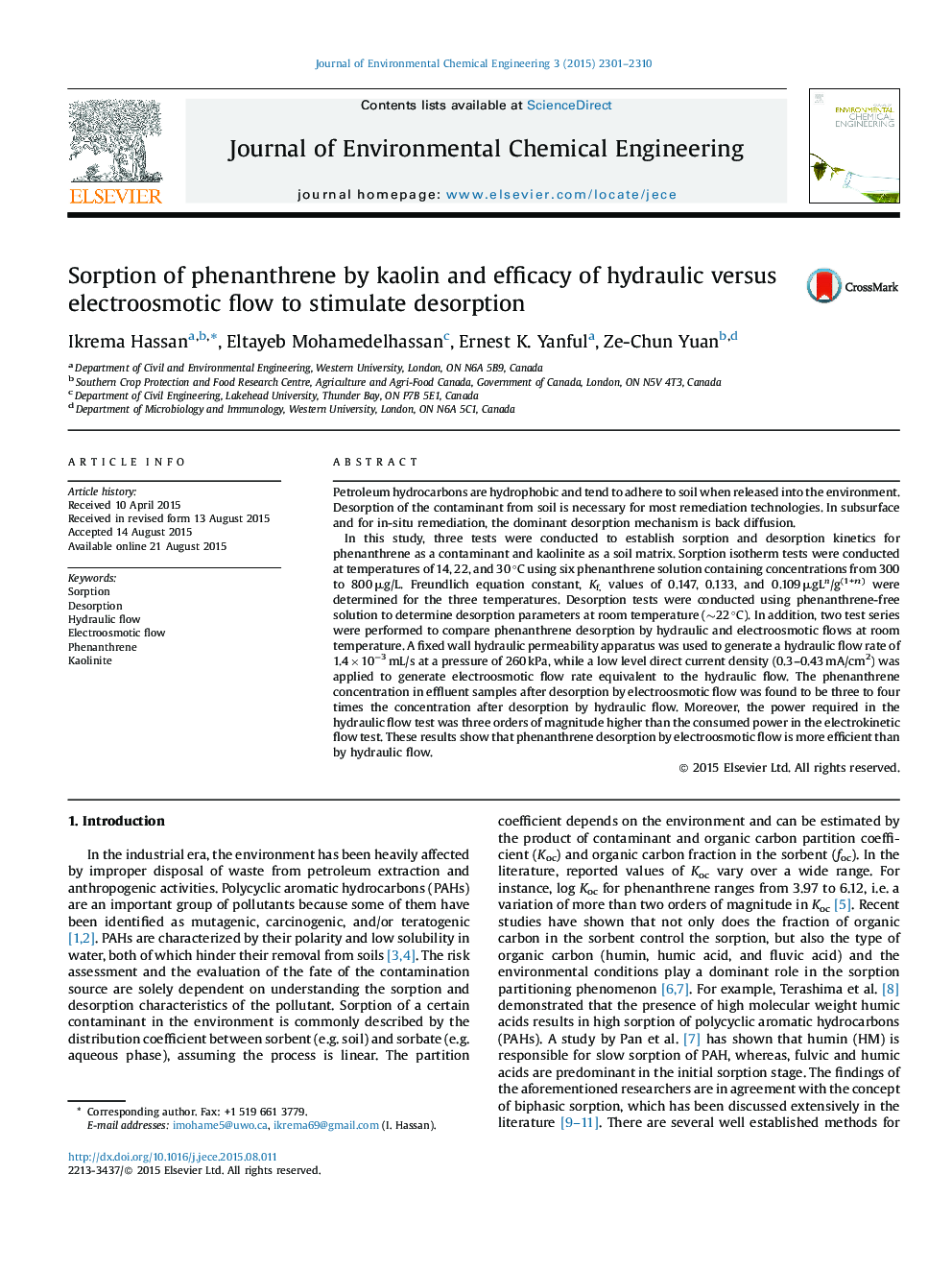| کد مقاله | کد نشریه | سال انتشار | مقاله انگلیسی | نسخه تمام متن |
|---|---|---|---|---|
| 222032 | 464269 | 2015 | 10 صفحه PDF | دانلود رایگان |
• Desorption by hydraulic flow is compared to desorption by electroosmotic flow.
• Desorption of phenanthrene can be promoted by the use of electroosmotic flow.
• Phenanthrene removal by electroosmotic flow was four times by hydraulic flow.
• Power consumption in hydraulic tests was higher than in electrokinetics tests.
Petroleum hydrocarbons are hydrophobic and tend to adhere to soil when released into the environment. Desorption of the contaminant from soil is necessary for most remediation technologies. In subsurface and for in-situ remediation, the dominant desorption mechanism is back diffusion.In this study, three tests were conducted to establish sorption and desorption kinetics for phenanthrene as a contaminant and kaolinite as a soil matrix. Sorption isotherm tests were conducted at temperatures of 14, 22, and 30 °C using six phenanthrene solution containing concentrations from 300 to 800 μg/L. Freundlich equation constant, Kf, values of 0.147, 0.133, and 0.109 μgLn/g(1+n) were determined for the three temperatures. Desorption tests were conducted using phenanthrene-free solution to determine desorption parameters at room temperature (∼22 °C). In addition, two test series were performed to compare phenanthrene desorption by hydraulic and electroosmotic flows at room temperature. A fixed wall hydraulic permeability apparatus was used to generate a hydraulic flow rate of 1.4 × 10−3 mL/s at a pressure of 260 kPa, while a low level direct current density (0.3–0.43 mA/cm2) was applied to generate electroosmotic flow rate equivalent to the hydraulic flow. The phenanthrene concentration in effluent samples after desorption by electroosmotic flow was found to be three to four times the concentration after desorption by hydraulic flow. Moreover, the power required in the hydraulic flow test was three orders of magnitude higher than the consumed power in the electrokinetic flow test. These results show that phenanthrene desorption by electroosmotic flow is more efficient than by hydraulic flow.
Journal: Journal of Environmental Chemical Engineering - Volume 3, Issue 4, Part A, December 2015, Pages 2301–2310
